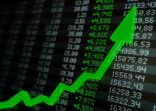Globally, the Shenzhen Composite Index led the pack, up 74% from January to end of June, and the Shanghai Composite was up 34%, according to the Securities and Futures Commission half year review report.
The Indonesian market, down 6.1%, was nearly tied for worst performer with Egypt (-6.2%). Despite the fall of the Indonesian index, valuations remained high with the average stock trading at 21.7 times earnings.
Performance aside, the world’s priciest and cheapest markets in terms of price-to-earnings were both in Asia during the first half.
The Shenzhen market also ranked as the world’s most expensive, with average valuations on the index priced at 60 times earnings. Next was Brazil, with of a PE of 32, followed by Australia (26.8) and Ireland (25.8).
The cheapest market index (9.48 price-to-earnings) was the Hang Seng China Enterprises Index, which tracks China enterprises listed in Hong Kong (H-shares). It was slightly cheaper than Russia’s MICEX at 9.88.
Another noteworthy statistic was the performance of the Hong Kong market versus rival Singapore. Despite volatility flowing over from the mainland, Hong Kong way outperformed, rising 11.2% while Singapore fell 1.4%.
Yet Hong Kong still remained cheaper, with stocks on the index trading on average at 10.9 times earnings compared to Singapore’s average PE of 14.9.
Nonetheless, the report cited some major risks facing the Hong Kong market:
“Valuation concerns, deleveraging activities and uncertainties about the economic outlook on the mainland; uncertainties about the timing and the magnitude of the interest rate hike in the US; and concerns about the debt problem in Greece which may result in instability in the eurozone.”
Source: Hong Kong’s Securities and Futures Commission

















